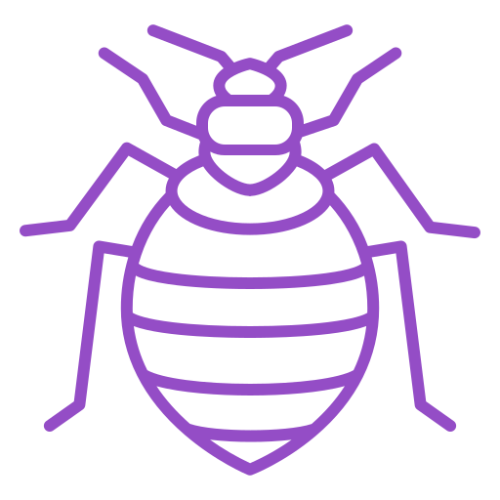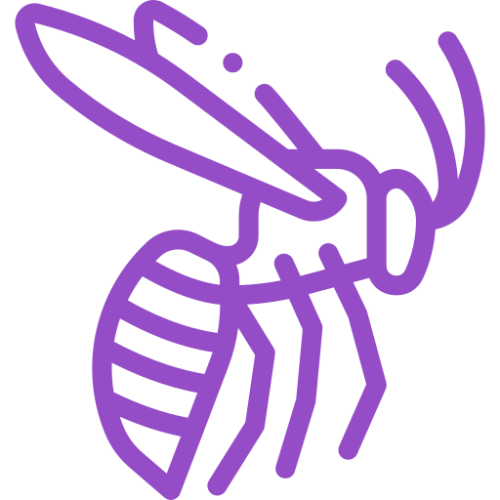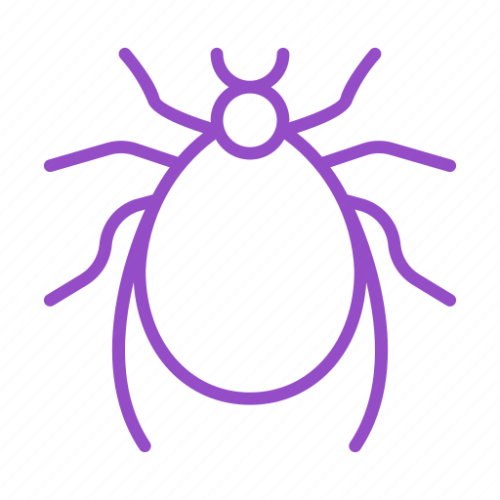Pantry Pest Control and Exterminator Service
The Best Pantry Pest Exterminator And Pantry Pest Control Services Near Me!
Pantry pests, also referred to as stored product pests, are insects that feed on almost all dry, stored food items including flour, cereals, baking mixes, macaroni and spices as well as other grain-based items such as pet food and birdseed.
Because pantry pests infest a wide range of food products they can be quite difficult to eradicate. A SmartGreen pest professional will design a customized pantry pest control program that fits the specific needs of your home, with the goal of eliminating these pests, and restoring your peace of mind that the food stored in your pantry is bug-free.
Call (404) 937-7088 today schedule today with SmartGreen Pest Control for your Pantry control services.
We Provide Pantry Pest Control and The Following Services:
SmartGreen Pest and Mosquito Control is dedicated to exterminating and preventing pest infestations on your property. Our services eradicate the most common and even uncommon pest types. You can count on us for:
Trust SmartGreen Pest and Mosquito Control exterminators in Woodstock, Kennesaw, GA and surrounding areas to get rid of all types of insects around your property. Call (404) 937-7088 today to request eco friendly pest control at your home or office.
Understanding Pantry Pests: Identification and Life Cycle
Pantry pests come in various shapes and sizes, and it's crucial to understand their identification and life cycle in order to effectively combat them. By familiarizing yourself with these common pantry pests, you can take proactive measures to prevent their infestation. Let's explore some of the most prevalent pantry pests and gain insights into their life cycles:
- Indian Meal Moths: These pests are often found in grains, nuts, cereals, and dried fruits. Adult Indian meal moths have a wingspan of about half an inch and are characterized by a distinct reddish-brown color on their outer wings. The larvae, commonly known as "worms," are off-white or pale yellow with a brown head.
- Flour Beetles: Flour beetles are small, reddish-brown insects that infest flour, cereal, cake mixes, and other dry food products. There are two common types: the confused flour beetle and the red flour beetle. Both types have similar appearances, with slender bodies and antennae.
- Sawtoothed Grain Beetles: These tiny, brown beetles are known for their distinctive saw-like projections on their thorax. Sawtoothed grain beetles infest a wide range of dry food products, including grains, cereals, pasta, and pet food.
- Drugstore Beetles: Drugstore beetles are oval-shaped, reddish-brown insects that infest a variety of food products, including spices, dried herbs, and grains. They can also feed on non-food items such as books, leather, and tobacco.
- Cigarette Beetles: Cigarette beetles are small, oval-shaped insects that are light brown in color. They infest tobacco products, spices, dried fruits, and other dry food items. Despite their name, they can also infest non-tobacco-related products.
Understanding the life cycle of pantry pests is essential for effective control. Most pantry pests follow a similar life cycle, consisting of four stages: egg, larva, pupa, and adult. The length of each stage can vary depending on environmental conditions such as temperature and humidity. By knowing their life cycle, you can target specific stages and interrupt their reproduction process, ultimately eliminating the pests from your pantry.
In the next section, we will discuss preventive measures that will help you keep pantry pests at bay and safeguard your food storage area.
Preventing Pantry Pests
Preventing pantry pests is key to maintaining a pest-free environment in your food storage area. By implementing proper food storage practices, regular pantry cleaning, and using pest deterrents, you can significantly reduce the risk of pantry pest infestations. Let's explore these preventive measures in detail:
Proper Food Storage Practices
- Sealed Containers: Store all dry food items, including grains, cereals, pasta, and baking supplies, in airtight containers. This prevents pests from gaining access to the food and helps maintain its freshness.
- Inspect Incoming Items: Before bringing groceries or bulk food purchases into your pantry, inspect them for signs of pests. Look for damaged packaging, webbing, or larvae presence. If you notice any signs, discard the affected items or store them separately until they can be properly treated.
- First In, First Out (FIFO): Practice the FIFO method to ensure that older food items are used first. This helps prevent food from sitting in the pantry for extended periods, reducing the likelihood of infestation.
- Properly Seal Trash: Dispose of food waste and packaging in tightly sealed trash bags and promptly remove them from the kitchen area. This prevents pests from being attracted to the scent of discarded food.
Regular Pantry Cleaning
- Clean Spills Immediately: Any spills or crumbs in the pantry should be cleaned promptly. Regularly wipe down shelves, drawers, and containers to remove any food residue that could attract pests.
- Vacuuming: Use a vacuum with a hose attachment to clean cracks, crevices, and corners of the pantry. This helps remove any hidden pests or their eggs.
- Deep Cleaning: Periodically empty and clean out the entire pantry. Remove all items, thoroughly clean shelves and walls with mild soap and water, and allow them to dry completely before restocking.
Using Pest Deterrents
- Bay Leaves: Place bay leaves in containers or on pantry shelves as a natural deterrent for pantry pests. The strong aroma repels many common pests.
- Herbs and Spices: Consider using pest-repellent herbs and spices such as peppermint, lavender, cloves, or cinnamon in your pantry. These natural scents can help deter pests from entering.
- Pheromone Traps: Use pheromone traps specifically designed for pantry pests to monitor and capture adult insects. These traps can help identify the presence of pests early on and prevent infestations from spreading.
By implementing these preventive measures, you can create an environment that is less attractive to pantry pests. However, if you do notice signs of an infestation, it's important to take immediate action. The next section will guide you on how to identify the signs of a pantry pest infestation.
Identifying Signs of a Pantry Pest Infestation
Identifying the signs of a pantry pest infestation is crucial to take swift action and prevent further damage to your food items. By being vigilant and knowing what to look for, you can recognize the presence of pantry pests early on. Here are some key signs to watch out for:
Visible Signs of Pest Presence
- Adult Insects: Spotting adult pantry pests crawling around your pantry is a clear indication of an infestation. Keep an eye out for flying moths, beetles, or small crawling insects.
- Eggs and Larvae: Pantry pests often lay their eggs in or near food items. Look for small, whitish eggs or larvae in your stored food. Common locations for finding eggs or larvae include corners of packaging, crevices, or webbing.
- Webs or Silk Threads: Some pantry pests, like Indian meal moths, create silk threads or webs in infested food products. These webs can be found in corners of packaging or around food items.
Damage to Food Items
- Holes or Chew Marks: Pantry pests can cause damage to packaging and food items. Look for small holes, chew marks, or gnawed packaging, especially in grains, cereals, or other dry food products.
- Webbing or Silk Residue: If you notice webbing or silk residue in your stored food, it is likely a sign of an infestation. This is commonly seen with pests like Indian meal moths and webbing clothes moths.
Unusual Smell or Appearance in Pantry
- Foul Odors: Some pantry pests emit unpleasant odors. If you detect a musty or rancid smell in your pantry, it could be an indication of a pest infestation.
- Cocoons or Pupae: Some pantry pests, like Indian meal moths, create cocoons or pupae in hidden areas of the pantry. Look for small, silky cocoons or pupae attached to walls, shelves, or corners.
It's important to note that different pantry pests may exhibit slightly different signs of infestation. By being aware of these signs, you can take immediate action to eliminate the pests and prevent further damage to your stored food items. In the next section, we will explore effective methods for eliminating pantry pests, both through natural and chemical approaches.
Eliminating Pantry Pests: Safe and Effective Methods
When it comes to eliminating pantry pests, it's important to choose safe and effective methods that will rid your pantry of these unwelcome intruders. There are various approaches you can take, including natural pest control methods and chemical solutions. Let's explore these options in detail:
Natural Pest Control Methods
- Freezing: For infested food items that can be frozen, placing them in the freezer for a few days can kill any eggs or larvae present. Ensure that the food is sealed in an airtight container or bag before freezing.
- Heat Treatment: Heat can be an effective way to eliminate pantry pests. For smaller items that can withstand high temperatures, such as spices or nuts, placing them in an oven at a temperature of 130°F (54°C) for 30 minutes can be sufficient to kill pests.
- Vacuuming: Use a vacuum with a hose attachment to suck up any visible pests, eggs, or larvae in your pantry. Be sure to empty the vacuum bag or canister immediately to prevent the pests from re-infesting.
- Traps: Utilize sticky traps or pheromone traps specifically designed for pantry pests. These traps attract and capture adult insects, helping to reduce their population. Place traps strategically in areas where you've observed the most pest activity.
Chemical Pest Control Methods
- Insecticides: Consider using insecticidal sprays or dusts labeled for pantry pests. Follow the instructions carefully and apply these products to cracks, crevices, and other hiding spots where pests may reside. Be cautious when using chemical pesticides and ensure they are safe for use in food storage areas.
- Residual Sprays: Apply residual sprays to surfaces in your pantry to create a barrier that repels pests. These sprays typically contain insecticides that provide long-lasting protection against crawling insects.
- Professional Pest Control: In severe infestations or if natural and chemical methods have been unsuccessful, it may be necessary to seek the assistance of a professional pest control service. They have the knowledge and expertise to effectively eliminate pantry pests using safe and targeted treatments.
Remember to always read and follow the instructions on any pest control products you use, and consider the potential risks associated with chemical treatments in a food storage area.
In the next section, we will discuss how to maintain a pest-free pantry by implementing regular inspections, proactive measures, and educating yourself about early signs of infestation.
Maintaining a Pest-Free Pantry
Maintaining a pest-free pantry requires consistent effort and attention to detail. By implementing regular inspections, proactive measures, and educating yourself about the early signs of infestation, you can ensure that your food storage area remains pest-free. Let's explore some essential strategies for maintaining a pest-free pantry:
Regular Inspections and Cleaning
- Scheduled Inspections: Set a regular schedule to inspect your pantry for signs of pests. Check for any new infestations, damaged packaging, or unusual odors. This proactive approach allows you to catch and address any issues early on.
- Thorough Cleaning: Conduct deep cleaning sessions periodically to remove any food residue, spills, or crumbs that may attract pests. Pay attention to corners, cracks, and crevices where pests can hide. Use mild soap and water to clean shelves, walls, and containers, and ensure they are completely dry before restocking.
Proactive Measures Against Pest Infestation
- Maintain Proper Food Storage: Continue practicing proper food storage techniques, such as using airtight containers and practicing the FIFO method. Regularly check for expired or damaged food items and promptly discard them.
- Seal Entry Points: Inspect your pantry for any gaps, cracks, or openings that pests could use to gain entry. Seal these entry points with caulk or weatherstripping to prevent pests from infiltrating your pantry.
- Monitor Food Sources: Be cautious when introducing new food items into your pantry. Inspect packaging for signs of damage or pests, and consider storing new items separately for a brief period to ensure they are pest-free before integrating them with the rest of your food storage.
Education: Recognizing Early Signs of Infestation
- Stay Informed: Continue educating yourself about the early signs of pantry pest infestations. Stay updated on the common pests in your area, their behavior, and the signs of their presence. This knowledge will help you identify and address any potential infestations promptly.
- Share Information: Educate other members of your household about pantry pest prevention and early detection. Encourage them to practice proper food storage and report any signs of pests immediately.
By implementing these strategies, you can maintain a pest-free pantry and safeguard your stored food items. Remember that prevention is key, and staying vigilant will help you address any potential pest issues before they become major infestations.
In conclusion, by understanding pantry pests, implementing preventive measures, identifying signs of infestation, eliminating pests using safe and effective methods, and maintaining a pest-free pantry, you can successfully prevent and eliminate common pests. Enjoy a clean and pest-free food storage area, ensuring the safety and quality of your stored food items.
To Prevent Future Infestations of Pantry Pests:
- Inspect products at the grocery store and avoid purchasing items that already appear damaged or opened.
- Store flour and other dried foods in airtight containers.
- Keep food storage areas clean so that crumbs and other particles do not attract insects.







